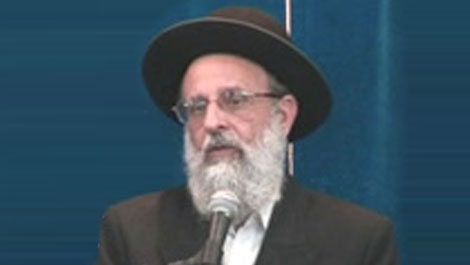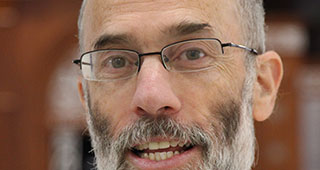Beit Midrash
- Sections
- Chemdat Yamim
- P'ninat Mishpat
[The current dispute between Reuven and Shimon started when Shimon opposed granting Reuven permission to open up a doorway from Reuven’s house to the empty area in between their two houses. Shimon said that years earlier there was a din Torah over whether Reuven could open two windows to that space, and it was ruled that he could open the windows but nothing else. It is not clear whether he had to pay money for that right, as the court papers regarding that adjudication were lost. Reuven found old court papers from 33 years previously regarding a din Torah about this space between Reuven’s and Shimon’s fathers. There it is stated that they came to a compromise that Reuven’s father would be allowed to use 6 amot of the area to unload his carriages in that place. The claim is that this implies that Reuven’s father was the owner of that space, especially because it did not say that the area was jointly owned but seemed to refer to it as Reuven’s father’s.]
We have precedent in the Torah for jointly owned land being referred to as if it is the property of one of the owners. Specifically, the area where the Beit Hamikdash is situated is described as being in the boundaries of the Tribe of Binyamin even though Yehuda possessed half the area. However, it is not the writing style of the Torah that is pertinent in this case but the terminology used by contemporary people, as it is they who wrote the document. In fact, Tosafot (Temura 17b) says that one should be more exhaustive in inferring things from the language of a document than from the language of a mishna, as the latter sometimes writes things that are extra and not to be inferred from.
The rabbi who asked the question wants to learn from the idea that a witness signed on a document is considered to be testifying only about the subject of the document and not about side facts (Shulchan Aruch, Choshen Mishpat 49). This should be even more correct concerning those who recorded a compromise between the parties on the practical matters of borders and provisions. The querying rabbi claimed that the issue of whether the side issues of the testimony are considered as the words of the witness depends on the halacha that in principle written testimony should not be valid at all. In other words, there was a special dispensation to count the testimony regarding monetary matters but this was limited to the main topic. The Ritva actually says that even if they intend to testify on everything, we do not accept the testimony broadly. [The Shoel U’Meishiv softly chided the querying rabbi who clearly saw the discussion of the relevant sources in the Knesset Hagedola yet did not acknowledge that this was his source of material – he also did not cite it fully accurately.]
In any case, the halacha is indeed that one cannot make inferences from the descriptions of the compromise makers in matters that were out of their main topic. Therefore, the decision of the present beit din to treat the area as joint is correct.

P'ninat Mishpat (802)
Various Rabbis
311 - Bank Notes Lost by Paid Messenger
312 - Inferences from Records of Past Testimony
313 - Relinquishing Rights to a Partnership
Load More

P'ninat Mishpat: Problematic Lights?
based on appeal of ruling 84085 of the Eretz Hemdah-Gazit Rabbinical Courts
Beit Din Eretz Hemda - Gazit | Cheshvan 5786

P'ninat Mishpat: Multiple Agreements and Parties – part II
based on ruling 80082 of the Eretz Hemdah-Gazit Rabbinical Courts
Beit Din Eretz Hemda - Gazit | Kislev 5786

P'ninat Mishpat: Late and Flawed Apartment
based on ruling 82174 of the Eretz Hemdah-Gazit Rabbinical Courts
Beit Din Eretz Hemda - Gazit | Kislev 5786

P'ninat Mishpat: A Seller with Questionable Rights to the Property – part I
based on ruling 84062 of the Eretz Hemdah-Gazit Rabbinical Courts
Beit Din Eretz Hemda - Gazit | Cheshvan 5786

Various Rabbis
Various Rabbis including those of of Yeshivat Bet El, such as Rabbi Chaim Katz, Rabbi Binyamin Bamberger and Rabbi Yitzchak Greenblat and others.

Altercation with a Photographer – part I
Tammuz 9 5777

Moreshet Shaul: A Crown and its Scepter – part II
Based on Siach Shaul, Pirkei Machshava V’Hadracha p. 294-5
Av 5785

Can a Tzaddik Deteriorate?
5770























